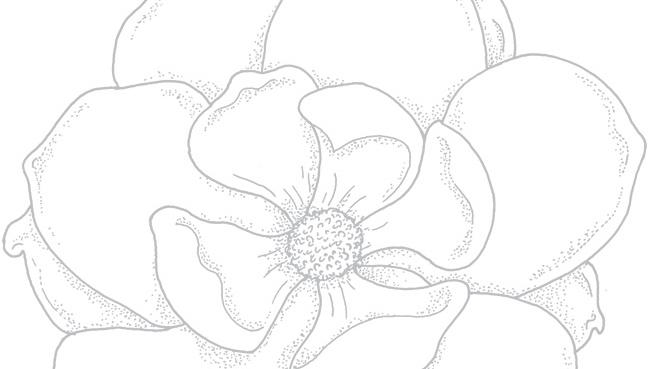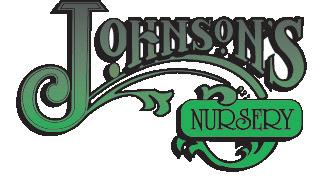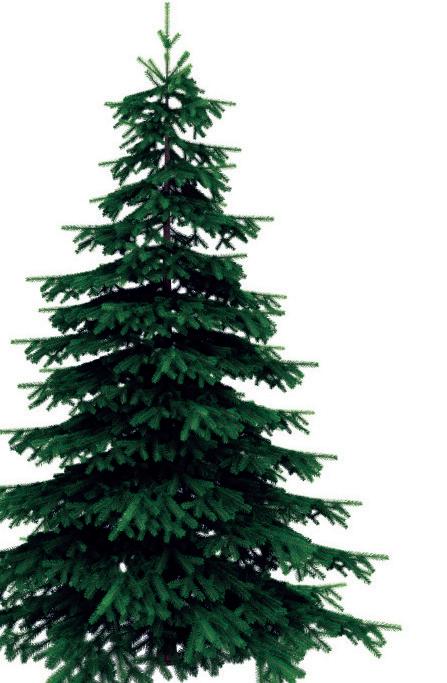
6 minute read
Backyard habitat
from Upstate Gardeners' Journal November-December 2020
by JFM Publishing—(585) magazine / (585) Kids / Upstate Gardeners' Journal
Fall and winter bird feeding
by Liz Magnanti
Advertisement
ABOVE: Common Redpoll. Photo courtesty Flickr: seabamirum
As the temperatures get cooler and the days grow shorter, birds are adjusting their behaviors to adapt to the conditions, which means an increased need for shelter, food, and a reliable source of water. While these needs can be hard for wildlife to come by, you can offer them easily in your yard to make it a haven for birds all winter long.
Shelter for birds can be given in the form of bird houses or roosting boxes. Bird houses can be left out in the yard all winter, just make sure they have been cleaned out! The difference between bird houses and roosting boxes are that roosting boxes have perches inside of them for many birds to land on. Bird houses do not have this feature. Multiple species will go inside roosting boxes at a time, even birds that don’t usually nest in houses. You can also get roosting pockets, small woven huts that birds will go into to stay out of the wind, snow and cold. As temperatures dip below freezing, water can be hard for birds and other wildlife to find, especially the small pools of water birds rely on for bathing and drinking. Birdbath heaters, or birdbaths with internal heaters, offer birds an unfrozen body of water. Most heated birdbaths operate on a thermostat, so they do not run constantly. The heating element will kick on when temperatures drop and will heat the water just enough so it doesn’t ice over. While most robins and bluebirds will migrate a little further south for the winter, those that stay are attracted to the source of water that a birdbath provides.
When it comes to attracting birds with food, the type of food makes a huge difference. First, make sure the feeder you have is clean, and the seed you are using is fresh. These are two of the most common reasons people stop seeing birds at their feeders. If you are going to feed birds, having a sunflower or mixed seed feeder is a must. Out of any one type of seed, black oil sunflower will attract birds the best. You can entice them more with a sunflower seed mix containing extras like peanuts, safflower, and shelled sunflower. Mixes containing a lot of cracked corn or milo tend to go to waste as the birds will throw those grains on the ground in order to get to the seeds with more fat and protein like the sunflower. Sunflower seeds will attract cardinals, blue jays, finches, chickadees, mourning doves, woodpeckers and more. In the winter months be on the lookout for purple finches; they are more common in the winter than they are in the spring. The males look like a male house finch but dipped in a raspberry juice. If you want the birds but not the mess from the sunflower seed shells, try sunflower hearts. You can get the same variety, but don’t have to worry about the husks from the seeds. Hopper feeders, which look like birdhouses with Plexiglas sides, are wonderful because they hold a lot and usually have a lot of perching room for small birds like chickadees and finches, but also larger birds like cardinals and blue jays. A tube feeder can also be good for sunflower seed, especially if it has large perches or a tray attached to the bottom. Larger birds need more room to perch so keep that in mind as you select your feeder.
Nyjer, or thistle (actually “nyjer” is the trade name for Guizotia abyssinica, only distantly related to our common thistle), is a must-have seed for the cooler months. Goldfinches, which are in the area all year, love nyjer seeds. Goldfinches molt their feathers as the weather cools and swap their bright yellow plumage for a dull olive color. In the winter we tend to have more birds coming to nyjer feeders because some northern seed-eating species fly south to our area to stay for the winter. Pine siskins and juncos are examples of species you may find at your nyjer feeder in the cooler months that you wouldn’t normally see in the spring and summer. Some years are “irruption years,” where we experience a larger than normal influx of a species. Redpolls
are an example of this. They are small, chickadee-sized birds with a raspberry patch on the top of their heads. When they have an irruption year you can find large flocks of them coming to nyjer feeders. Nyjer is a seed that has a short shelf life, only two to three months, so make sure you buy it in small quantities at a time so it doesn’t go bad before the birds can eat it.
Suet is another cool-weather food staple and birds absolutely love eating from these blocks of fat! [See our craft project in this issue—Ed.] Anything with peanuts mixed in it is ideal and will give you the best diversity of birds. Nuthatches, and especially woodpeckers, love suet! Birds need to eat more fat in the winter to maintain their body temperature and suet is a perfect, low cost way to help them do just that. When picking out a suet feeder, try to get one that has a “tail prop” on it. Woodpeckers use their tail like a third leg of a tripod for stability when perching and landing. Large woodpeckers, like the 16-inch-long pileated woodpecker, will appreciate a larger feeder. All winter long you can expect to see a nice diversity of woodpeckers. Downy, hairy, red-bellied, and pileated woodpeckers are common feeder birds you can attract all season long.
Peanuts are a food addition I always recommend. They are a huge crowd pleaser in the backyard! Peanuts in the shell will bring in blue jays consistently. Their squawking will also remind you any time you let the peanut feeder go empty! Peanut “pickouts” are the insides of the peanut and can be added to a seed mix or put in their own feeder and are a favorite of nuthatches, chickadees and titmice. Peanuts have a lot of fat and protein in them and birds will readily eat them all winter.
When feeding birds a common complaint is the number of squirrels! And although they need to eat too, it can be frustrating to have your feeders emptied by a furred, not feathered creature. Squirrel proofing is possible, but it can take some maneuvering. Put baffles on poles to keep squirrels from climbing up them, just make sure they are four to five feet high, otherwise they can jump right over them. Ready-made squirrel-proof feeders are also available, and some are real winners. Anything with a lifetime guarantee will usually work well for keeping squirrels out. The company will stand by the product and for good reason.
This winter as we hibernate in our homes, nature can provide just as much entertainment as the TV. Adding some wildlife-friendly features to the yard can go a long way, especially in the cooler weather. You may be surprised by how adding a few amenities can make your yard a sanctuary, and as they say, if you build it, they will come!
Liz Magnanti is the manager of the Bird House in Pittsford.
Bee in the Garden • GIFT SHOP •

Give the Gift of Grilling this Holiday Season.
Tailgating at home? We sell and fill propane tanks year ’round.
Visit the Grillmasters at MILEAGE MASTER CENTER 2488 Browncroft Blvd. 586-1870
Genesis II E-310 Models now on Display
We have a great selection of wood chips & charcoal year ’round
HOURS: Mon Wed Fri: 1–4pm; Tue Thu: 9am–5pm; Sat: 9am–4pm Extended hours for the Holiday Season

Unique and Unsual Gifts We Have Them!

Fresh Cut & Potted Trees • poinsettias • pine roping • wreaths • Christmas Decor... • Great Garden Giftware
11753 East Main St. East Aurora, NY (716) 652-8969 Find us on Facebook
Coupon 30% off 1 decor/garden art item
Valid Nov. 21 & 22, 2020 limitations apply
Coupon 30% off 1 decor/garden art item
Valid Dec. 5 & 6, 2020 limitations apply





